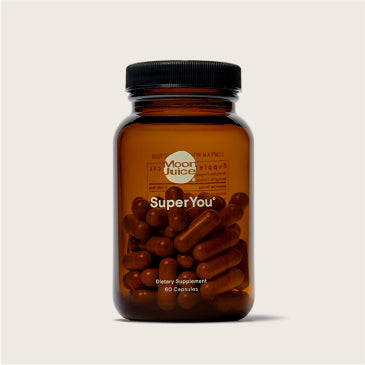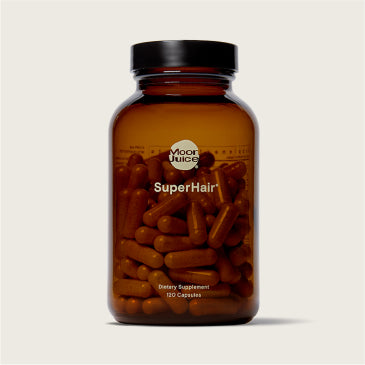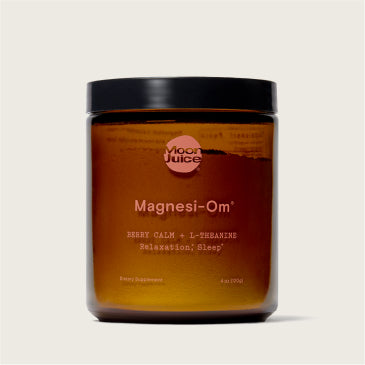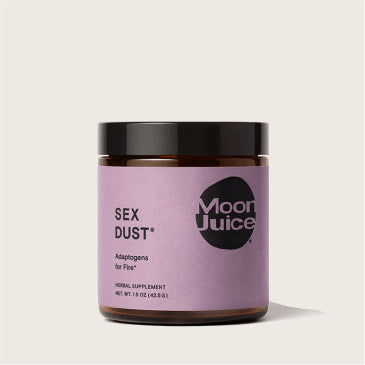Interested in adding a new exfoliating product into your routine? The benefits of exfoliating are too good to pass up when you want to make major progress on a variety of complexion concerns. Lactic Acid and Glycolic Acid are two of the most popular types of exfoliants — but what exactly sets one apart from the other?
In this comprehensive guide to Lactic Acid vs. Glycolic Acid, you’ll discover their main similarities and differences, as well as the benefits you can get from each. Plus: how to know which one is best for you and if it’s safe to use the two together.
Lactic Acid vs. Glycolic Acid: Do They Do the Same Thing?
First things first, let’s briefly cover what Lactic and Glycolic Acid have in common. Their most basic similarity is that they’re both exfoliators. Exfoliating is a foolproof way to rev up skin cell turnover, a process that sheds dead skin cells and replaces them with fresh, healthy ones.
Skin cell turnover rates slow down over time — which may lead to dullness, dryness, breakouts, and signs of accelerated aging — but a consistent exfoliating regimen can help speed up the process.
Since they’re both Alpha Hydroxy Acids, aka AHA exfoliants, they’re alike from a chemical standpoint. But what does AHA do for skin anyways? Alpha Hydroxy Acid, as opposed to Beta Hydroxy Acid, is water-soluble and has low molecular weights, which allows it to yield a range of benefits for your skin’s health and appearance. They prime and revitalize the skin’s surface so it looks smooth, fresh, and bright. All the while, your skin care products that follow will absorb more readily, and your makeup will apply, blend, and sit better.
Whether you’re looking to enhance skin clarity, halt the development of fine lines, or anywhere in between, both chemical exfoliants step in to support skin tone, texture, and radiance… and then some.
What Is Lactic Acid?
Lactic Acid is a chemical exfoliant famed for being gentle, which makes it an attractive option for those with sensitive skin types. Often derived from plants and milk, this gentle exfoliating acid works wonders on any skin type by dissolving the glue-like substance that holds dead skin cells together, revealing a smoother and more radiant complexion. (Note: Even people with sensitive skin conditions can benefit from exfoliating — so long as it’s done safely, slowly, and with the right product. More on this below.)
The key benefits of Lactic Acid include:
- Antioxidant properties to stave off free radical damage, which contributes to
- accelerated aging
- Skin barrier protection
- Moisturizing properties
- Smoothing properties
- Reducing the look of fine lines and wrinkles
- Reducing discoloration, including photoaging and melasma
What Is Glycolic Acid?
Glycolic Acid is a chemical exfoliant with an even smaller molecular size than Lactic Acid, which allows it to penetrate the skin more deeply. It offers a few additional benefits compared to Lactic Acid.
By exfoliating the skin and removing dead skin cells, this exfoliating acid helps prevent pore congestion and reduce acne breakouts. Furthermore, it promotes cell turnover, improving skin tone and texture and reducing the look of acne scars and hyperpigmentation.
The key benefits of Glycolic Acid include:
- Bouncier, more elastic skin
- Promoting skin clarity
- Reducing discoloration from melasma, hyperpigmentation, and photoaging
- A plumper, more hydrated complexion
Key Differences Between Lactic Acid and Glycolic Acid
On the fence about using Lactic Acid vs. Glycolic Acid? Here’s a quick cheat sheet detailing which chemical exfoliant for face and body skincare reigns supreme across diverse skin concerns.
Fine Lines and Wrinkles
As AHAs, Lactic Acid and Glycolic Acid can help minimize these signs of accelerated aging.
Lactic Acid has the power to increase epidermal and dermal firmness and thickness, resulting in smoother skin with less pronounced fine lines and wrinkles.
Meanwhile, regular application of Glycolic Acid acid stimulates collagen production, which slows down with stress and time. More collagen means firmer, rejuvenated, and more supple skin.
Breakouts
Although BHA exfoliants are tried-and-true powerhouses to reduce non-cystic acne, they’re not the only types of exfoliators that can help keep breakouts at bay. Research shows that Glycolic Acid is a worthy ingredient to keep in your skin-clarifying routine. That’s because it zaps P. acnes, a type of bacteria that causes breakouts.
Bonus: Since it also targets discoloration, you can (and should) continue to use Glycolic Acid if your pimples leave dark spots in their wake.
Discoloration
Both Lactic and Glycolic Acid have clinically proven benefits when it comes to discoloration — including improvements in sun and dark spots, hyperpigmentation, and melasma. Lactic Acid can help mitigate photoaging. Glycolic Acid, too, proves its prowess for photoaging and other instigators of unwanted pigmentation.
Between Lactic Acid vs. Glycolic Acid for discoloration, both exfoliants are equal winners. The two AHAs promote a brighter, more even skin tone and help fade away unwanted spots and discolored patches.
Hydration
When used consistently, Glycolic Acid has the ability to increase the skin’s Hyaluronic Acid (HA) content. While HA is a popular ingredient in topical skin care products, it’s also a naturally occurring substance within the skin that supports hydration and bounce. That said, if your skin is thirsty and lacks elasticity, Glycolic can sweep in to quench and conquer.
Moisture
Although hydration and moisture tend to get conflated, they’re not one and the same. (For example, dehydrated skin lacks water, whereas dry skin lacks oil.) That said, both hydration and moisture are crucial for a healthy and refreshed complexion. Since Lactic Acid is among the skin’s natural moisturizing factors (NMF), it can help keep moisture intact while also supporting the integrity of your skin barrier.

Can I Use Lactic and Glycolic Acid Together?
In one word: yes. Of course, everyone’s skin is different, and it may respond better to one or the other on its own. (Your own skin condition may even vary from one day to the next, depending on diverse factors ranging from the season and climate to more immediate things like your hydration status and dietary changes.) But generally speaking, it’s fine to pair them together.
If you’re interested in reaping the benefits of Lactic and Glycolic Acid simultaneously, it’s best to find a single solution that includes both. This route is more ideal than pairing different exfoliating products together, as doing so can heighten the risk of reactivity. After all, the ultimate goal is to improve your skin condition — not throw a bunch of actives on it and risk damaging your skin barrier in the process.
Acid Potion is a great option, as this liquid exfoliant includes a handful of AHAs — Glycolic and Lactic among them — plus the BHA Salicylic Acid. The 25% AHA + BHA complex was carefully formulated to ensure that all exfoliants play well together to safely and effectively resurface and unclog your complexion.
And while some exfoliators can get a bad rap for causing redness and irritation, Acid Potion isn’t one of them. It also packs a smattering of soothing ingredients, including:
- Reishi, an adaptogenic mushroom that promotes hydration and helps minimize signs of oxidative stress (i.e., a dull, lackluster, and uneven complexion)
- Niacinamide, a form of Vitamin B3 that helps improve skin barrier function and protects against transepidermal water loss (TEWL)
Again Lactic and Glycolic are safe and effective together — namely when they team up in a clean, thoughtfully formulated topical product. That said, it’s important to abide by a few “rules” when incorporating any exfoliants into your routine:
- Start with a once-weekly application and level up to 3 times per week.
- Since chemical exfoliants heighten photosensitivity, it’s best to use them in your nighttime skin care routine. Most importantly, apply mineral sunscreen (with a minimum of SPF 30) each and every morning — and intermittently throughout the day — to protect your skin from UV rays.
- Don’t pair exfoliants with other actives — such as Vitamin C, Retinol, and Benzoyl Peroxide — in the same routine. Instead, you can apply topical Vitamin C in the daytime and save your Retinol, Rx Retinoid, or Benzoyl Peroxide for non-exfoliating nights.
Which Is Best For You?
All things considered, Lactic Acid and Glycolic Acid share more things in common than not since they’re both AHAs with similar properties. Lactic Acid may have an edge if your skin is dry or sensitive, given its larger molecular size, natural moisturizing properties, and ability to fortify and protect the skin barrier. On the other hand, Glycolic Acid may be best for you if your skin is oily or acne-prone since it boasts antibacterial properties.
Yet if your skin is generally resilient and you don’t want to choose sides between Lactic Acid vs. Glycolic Acid, your best bet will be to find a topical skin care product that includes both. The dynamic duo works synergistically to achieve a smoother, fresher, more radiant complexion. Better yet, you won’t have to pick and choose which skin concerns you want to tackle and wait longer to see if one works better than the other. With consistent use of these exfoliating heroes, your skin is bound to look and feel happier and healthier in no time.
Sources
- https://www.ncbi.nlm.nih.gov/pmc/articles/PMC6017965/
- https://onlinelibrary.wiley.com/doi/abs/10.1111/ijd.14202
- https://pubmed.ncbi.nlm.nih.gov/8784274/
- https://pubmed.ncbi.nlm.nih.gov/17199649/
- https://pubmed.ncbi.nlm.nih.gov/32583600/
- https://pubmed.ncbi.nlm.nih.gov/17642863/
- https://pubmed.ncbi.nlm.nih.gov/11359487/
- https://pubmed.ncbi.nlm.nih.gov/23220080/

.png?v=1689045185936)
.png?v=1689045196515)












